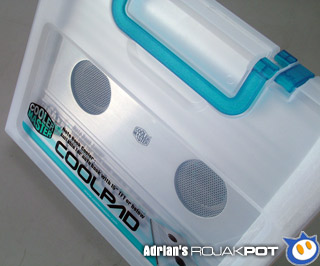Introduction
Cooler Master is pretty well known among PC hardware enthusiasts for their great line of products, especially among modders. Among some of their popular products are their line of aluminum enclosures, hard disk coolers and CPU coolers. But today, we'll take a look at a Cooler Master product that caters to a different segment of users - notebook users.
Yes! We will be taking a close look at the Cooler Master PNC-U51 CoolPad notebook cooler!
A Notebook Cooler? But Why Bother?
Back in the good old days, notebooks never produced much heat. The processors used in those notebooks were always a lot slower than their desktop brethren. And those notebooks were never required to be capable of running 3D games so they came with simple graphics chips that dissipated very little power.
But today, faster notebooks are the order of the day as users shift heavier workloads to their notebooks. In fact, many users now insist that their notebooks must be capable of playing processor- and graphics-intensive games!
With such demands fueling the development of faster notebook processors and graphics cards, it is inevitable that these new notebooks will also produce a lot more heat. Although notebook processors use a very low operating voltage and thus produce far less heat than a typical desktop processor, they can still produce a lot of heat, especially when they are running at full load.
Take my notebook for example. Its 1.7GHz Intel Pentium 4M usually dissipates about 30 Watts of heat. While this is nothing compared to a desktop processor, it's still quite a lot of heat! Especially since everything is very closely packed inside a notebook. With very little air space within the confines of the notebook's chassis, heat builds up very quickly.
Try running a notebook off your lap and you'll see what I mean. It can literally get too hot for your lap!







 Add to Reddit
Add to Reddit


